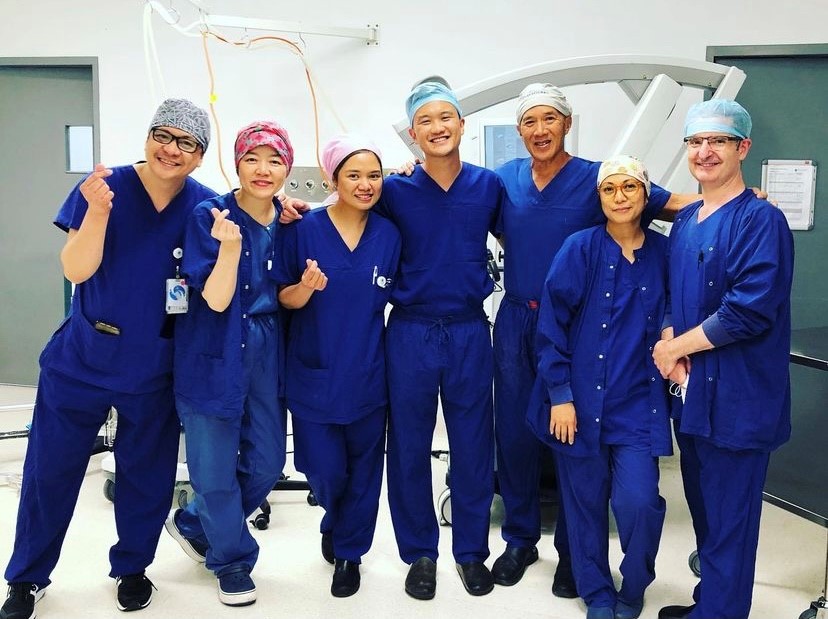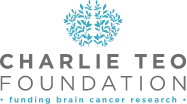“The Australian and NZ College of Anaesthetists states that specialist anaesthetists fulfil the roles of a medical expert, collaborator, communicator, health advocate, manager, professional and scholar… not just putting someone to sleep.
The role of a paediatric anaesthetist emblazons all of these aspects.
One thing that drew me to paediatric anaesthesia is that of being an advocate for the child. So not just administering an anaesthetic for complex surgery but providing comfort to a child (and their family) when faced with such difficult life challenges.
Infants and children also have different physiology and so are technically more challenging to anaesthetise, compared to adults – another reason that drew me to paediatric anaesthesia.
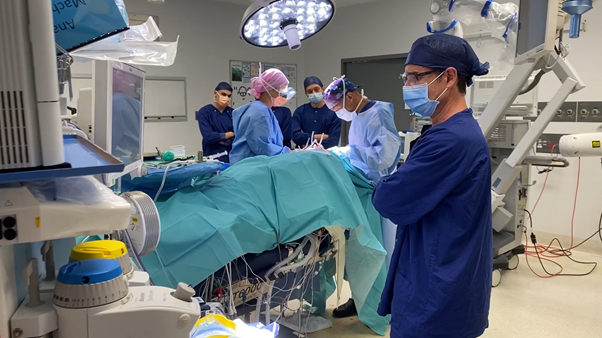
My goal is also to make the child’s journey through hospital, surgery and beyond as least traumatic as possible. That would mean establishing a rapport, assessing pre-operative anxiety and supporting the child and their family through the peri-operative period. To do this the best requires me to be a collaborator, a communicator, a manager and an advocate.
My anaesthetic expertise comes from extensive training in paediatric anaesthesia here in Sydney and also overseas, at the prestigious Hospital for Sick Children in Toronto. Anaesthetic expertise is maintained by being involved with many complex surgical cases and ongoing education.
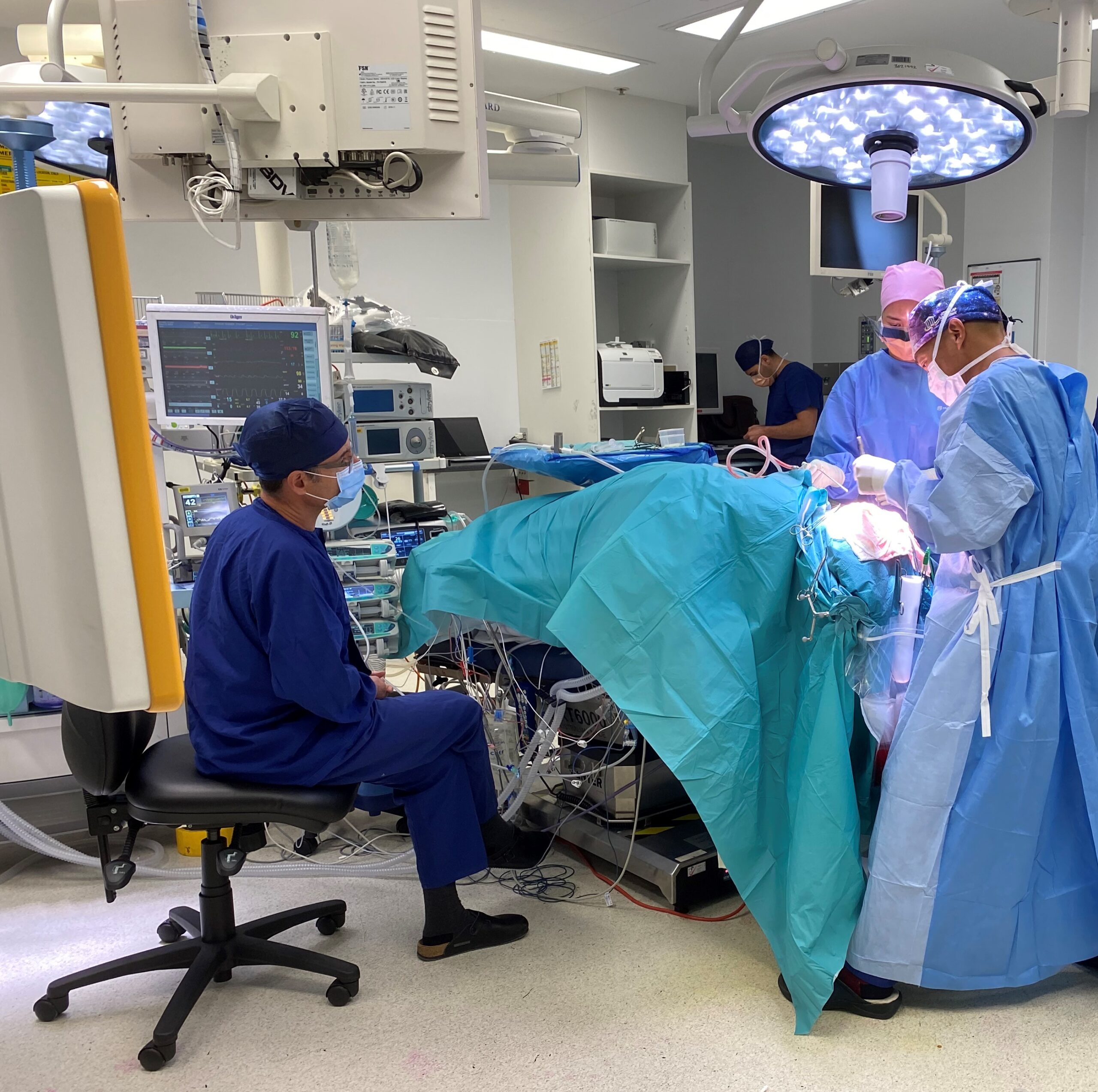
In all my time, I have anaesthetised over 15,000 children.
The youngest patient I have ever anaesthetised was 20 minutes old: just born!
The longest anaesthetic that I have ever given was for a patient with Dr Charlie Teo: about 20 hours, in a teenager with an extensive brain tumour behind the eye. The surgery performed by Charlie was extensive, with a plastic surgeon reconstructing the eye socket. Within a minute of waking up, the patient looked over to Charlie and said “thank you”. I will never forget that wake up.
One of the most difficult brain tumour cases we ever performed was for a 22-year-old lady with a very vascular brain tumour. This tumour was the size of a grapefruit with over 20 feeding arteries into it. During the resection, the tumour was constantly bleeding out from these feeding arteries. My team and I had to administer 27 litres of blood products throughout the whole case! There are only 5 litres of blood in the body, so that is an extreme amount of critical bleeding. The blood was transfused so quickly, that the excess potassium salt from the blood transfusion stopped the heart 3 times through this operation. Fortunately, we were able to shock the patient back to life and continue on. This lady walked out of hospital one week later…
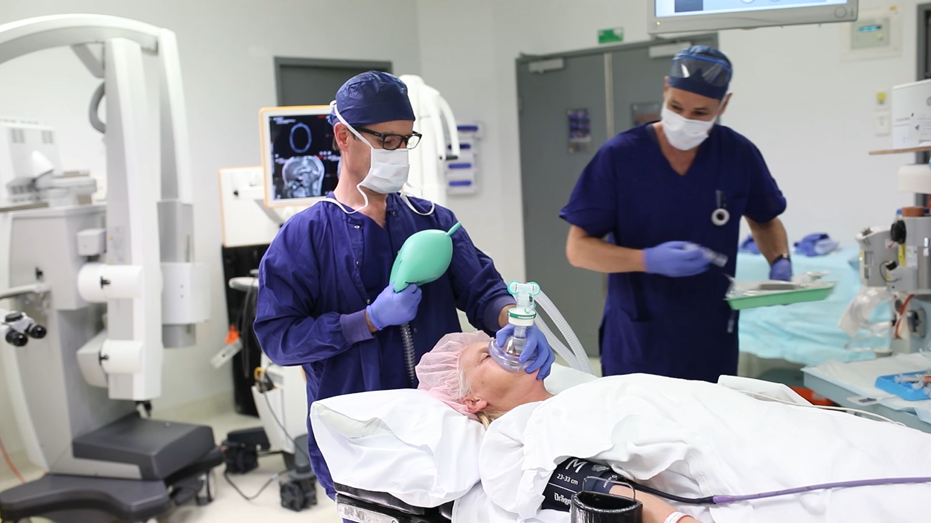
I have been involved with children along their whole journey: from providing anaesthesia for the initial CT scan or MRI that diagnoses the brain tumour, to being there during their brain tumour resection surgery and also providing anaesthesia for radiotherapy treatment and other treatments. This is why I am required.
I would like to see more research to find a cure for paediatric brain tumours.
It would be great not to be required…”
